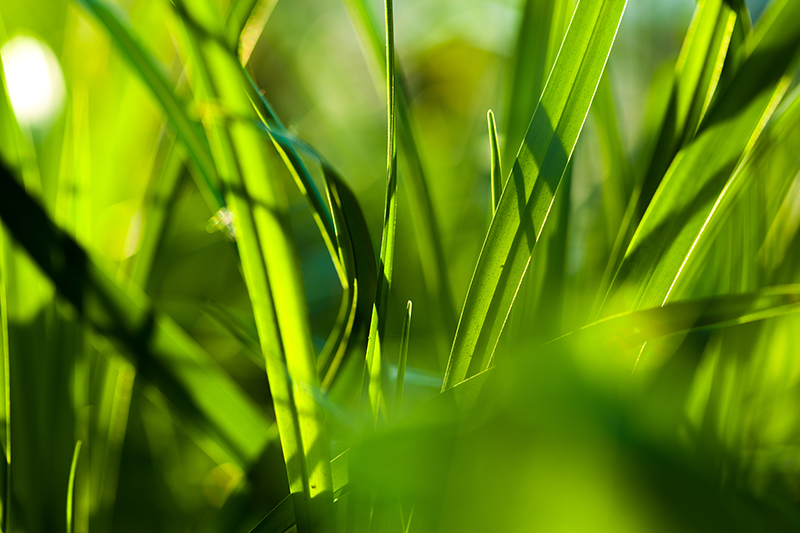
Believe it or not, the summer months are toughest on our lawns – especially in hot, Inland California climates. Maintaining your lawn’s healthy green color and thickness takes a little bit more effort in the summer than it does in cooler weather. We’ve compiled a few Dos and Don’ts for taking care of your lawn during the summer.
Fertilizing
When choosing a lawn fertilizer for your lawn it’s important to note the amount of nitrogen it contains. This is signified by the first number in what is usually a series of three numbers. For example, a fertilizer that that is 21-7-14 contains 21% nitrogen by weight. This type of fertilizer would be considered high in nitrogen content and is typical of most all-purpose fertilizers.
We recommend NEVER USING A HIGH NITROGEN FERTILIZER ON COOL SEASON GRASSES IN THE SUMMER. Cool season grasses, like our Elite Plus™ Fescue, reach their peak growing season during the cooler weather of fall through spring. Using a nitrogen fertilizer in the summer on Fescue and other Cool Season grasses could result in burning and will encourage disease to develop. Cool season grasses can benefit from an Iron-based fertilizer during the summer for extra color.
Conversely, Warm season grasses (these go dormant in winter) thrive on summer fertilizations every 8 to 10 weeks. Examples of warm season grasses include Hybrid Bermuda and St. Augustine varieties. While these grasses are at the peak of their growing season, adding fertilizer will give the lawn a darker green color and faster growth that may require additional mowing.
Mowing Height
In the summer, it’s best to adjust your mower to leave your grass a little longer than usual. Taller grass provides more shade to the soil beneath. This reduces water evaporation, leads to a deeper root system, and can help prevent weed seeds from germinating.
The ideal mowing height does vary by the type of grass you have. Typically, cool season grasses, like Fescue, should be mowed taller than warm season grasses. During the summer, the Cooler Season grasses are more susceptible to drying out. A taller blade will help the overall health of the lawn.
We feature a guide to Proper Mowing Height on our web site.
Irrigation
During the summer months, your lawn may need some additional watering. It is best for the lawn to be watered deeply and less frequently. This promotes a deeper and much healthier root system that will keep your lawn looking it’s best all summer long. If you notice water puddling or water running off, switch to two, shorter irrigation cycles rather than one longer one. Watering your lawn between 4 AM and 10 AM decreases evaporation during the hot afternoons and also decreases the chances of disease occurring.
Weed Control
Weed control is easiest when weeds are kept at bay early and often during the summer months. By applying a broad-leaf herbicide spray directly to weeds early in their lifecycle, an infestation can be minimized. Check for additional sprouts and control by pulling or spraying at regular intervals.
Disease & Pests
Like weeds, disease and pests are also more of an issue affecting lawns in the mid to late summer months. Most of the time, brown spots on the lawn are caused by watering problems. Use a screwdriver to probe the soil under the brown spot. If it is dry, likely you have poor irrigation patterns or need to lengthen irrigation times.
Brown spots that persist after watering adjustments have been made, however, could be the result of disease or grubs. Grubs are the larval stage of several beetles in California, including the June Bug or Japanese Beetle. These beetles lay their eggs in the grass in early spring and the grubs hatch and begin to destroy the root systems in the lawn later in the summer. If grubs are present, you can “peel back” the turf to yield no roots and an occasional white grub in the root zone.
Disease can develop when the summer months create a warm, moist environment and can be spread by mowing if not diagnosed and sprayed in a timely manner. If in doubt as to the cause of brown spots, your local nursery or licensed landscaper may be able to help diagnose the problem if you bring in a sample of the soil and leaf material.


